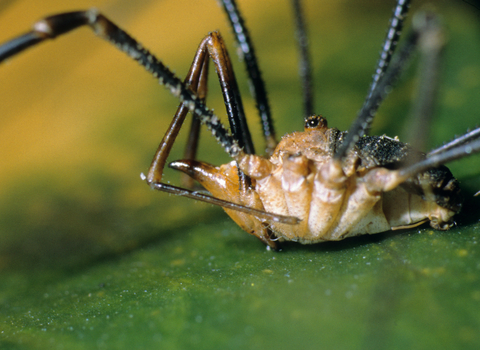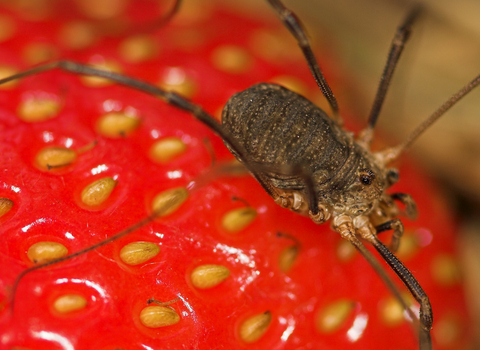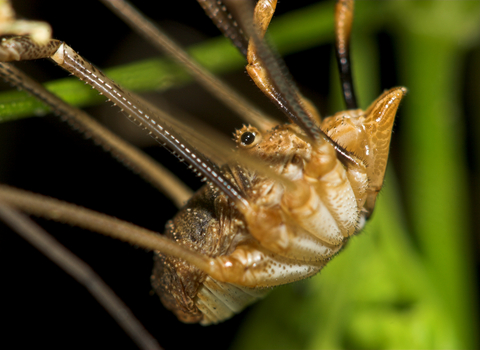
Harvestman (Phalangium opilio) ©Paul Richards

Harvestman (Phalangium opilio) ©Paul Richards

Harvestman (Phalangium opilio) ©Paul Richards
Common harvestman
The common harvestman is familiar to us as the large, spindly spider-like creature that frequents gardens and houses. It predates on smaller invertebrates which it catches using hooks on the ends of its legs.
